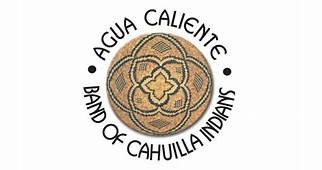2018 Main Residency Match is largest on record with nearly 44,000 registered applicants and more than 33,000 positions offered.
The National Resident Matching Program® (NRMP®) celebrates Match Day with the thousands of applicants and programs participating in the 2018 Main Residency Match®. On Match Day, medical school students and graduates from the United States and around the world learn in which U.S. residency programs they will train for the next three to seven years. Seniors at U.S. allopathic medical schools participate in Match Day ceremonies and open their Match letters in the company of family, friends, and advisers. Today the NRMP also releases the Advance Data Tables (select tables from the full Match report published in early May), “Match by the Numbers”, and Match Day infographic.
As the Coachella Valley’s first Teaching Hospital, Eisenhower Health is proud to announce that it has, once again, filled every spot for its Internal Medicine and Family Medicine residency programs in this year’s Match.
“NRMP is delighted to share this milestone with so many young physicians and to acknowledge their years of hard work and dedication,” says Mona M. Signer, NRMP President and CEO. “We wish them success as they begin their medical careers in communities across the nation.” NRMP will celebrate with the American Medical Association and the Association of American Medical Colleges (AAMC) on social media with the #Match2018 hashtag.
Largest Match on Record
The 2018 Main Residency Match is the largest in NRMP history. A record-high 37,103 applicants submitted program choices for 33,167 positions, the most ever offered in the Match. The number of available first-year (PGY-1) positions rose to 30,232, an increase of 1,383 over 2017.
Program Highlights
Specialty Competitiveness
The results of the Match are closely watched because they can be predictors of future physician workforce supply. There also is significant interest in the competitiveness of specialties, as measured by the percentage of positions filled overall and the percentage filled by senior students in U.S. allopathic medical schools.
- Specialties with more than 30 positions that filled all available positions were Integrated Interventional Radiology, Neurological Surgery, Physical Medicine and Rehabilitation, and Thoracic Surgery.
- Specialties with more than 30 positions that filled more than 90 percent with U.S. allopathic seniors were Integrated Interventional Radiology (95.5%), Orthopedic Surgery (93.1%), Integrated Plastic Surgery (92.9%), Radiation Oncology (91.5%), Neurological Surgery (90.2%), and Otolaryngology (90.2%).
- Specialties with more than 30 positions that filled less than 45 percent with U.S. allopathic seniors were Family Medicine (44.9%), Internal Medicine (42.4%), Surgery – Preliminary (41.6%), Pediatrics – Primary (40.0%), and Pathology (36.6%).
Primary Care
Of the 30,232 first-year positions offered, 14,695 were in the primary care specialties of Family Medicine, Internal Medicine, Internal Medicine – Pediatrics, Internal Medicine – Primary, and Pediatrics; of those, 14,333 (97.5%) were filled and 7,104 (48.3%) were filled by U.S. allopathic seniors. Since 2014, the number of primary care positions has grown by 1,713, a 13.2 percent increase. Below are highlights from 2018:
- Internal Medicine programs offered 7,542 positions, 309 more than in 2017; 7,363 (97.6%) positions filled, and 3,195 (42.4%) filled with U.S. allopathic seniors. The number and percentage of U.S. allopathic seniors matching to Internal Medicine has declined every year since 2015.
- Family Medicine programs offered 3,629 positions, 273 more than in 2017; 3,510 (96.7%) positions filled, and 1,628 (44.9%) filled with U.S. allopathic seniors. Since 2009, the number of U.S. allopathic seniors matching to Family Medicine has increased every year.
- Pediatrics programs offered 2,768 positions, 30 more than in 2017; 2,711 (97.9%) filled, and 1,746 (63.1%) filled with U.S. allopathic seniors. The percentage of U.S. allopathic seniors matching to Pediatrics has declined every year since 2015.
Other First-Year Specialty Growth
- Emergency Medicine offered 2,278 first-year positions, 231 more than in 2017, and filled all but 13. The overall fill rate was 99.4 percent, and 70.5 percent were filled by U.S. allopathic seniors. Since 2014, the number of Emergency Medicine positions has increased by 492, or 27.5 percent.
- Other specialties with at least 30 positions and increasing by more than 50 positions over 2017 were Psychiatry (61 more positions, a 4.1 percent increase), Neurology (60 more positions, a 12.2 percent increase), and Anesthesiology (51 more positions, a 4.2 percent increase). Also, the number of Transitional Year (PGY-1 only) positions increased by 178, a 19.6 percent increase.
Applicant Highlights
The number of Match registrants was the highest ever at 43,909. The increase was due primarily to students/graduates of U.S. osteopathic medical schools, whose numbers grew by 1,054 over 2017 to 6,054 this year.
- The number of U.S. allopathic medical school seniors who submitted program choices was a record high 18,818, an increase of 279 over 2017; 17,740 (94.3%) matched to first-year positions, the highest number ever. The 94 percent PGY-1 match rate for U.S. allopathic seniors has been consistent for many years.
- The number of U.S. osteopathic medical school students and graduates who submitted program choices was 4,617, and 3,771 (81.7%) matched to PGY-1 positions. Both are all-time highs. Since 2014, the number of U.S. osteopathic medical school students and graduates seeking positions has risen by 1,879, a 68.6 percent increase. Participation by osteopathic students is expected to continue to grow over the next several years as a result of the transition to a single accreditation system; by 2020, when all graduate medical education programs are accredited by the ACGME, the American Osteopathic Association Match will cease to exist.
- The number of U.S. citizen international medical school students and graduates (IMGs) who submitted program choices was 5,075, an increase of six over 2017; 57.1 percent (2,900) matched to PGY-1 positions, the highest match rate since 1993.
- The number of non-U.S. citizen IMGs who participated in the Match declined for the second consecutive year. In 2018, 7,067 IMGs submitted program choices, down 217 from 2017 and 393 from 2016. However, 3,962 IMGs (56.1%) matched to first-year positions, the highest match rate since 1993.
Unmatched Applicants
Applicants who did not match to a residency position participated in the NRMP Match Week Supplemental Offer and Acceptance Program® (SOAP®) to attempt to obtain an unfilled position. This year, 1,171 of the 1,268 unfilled positions were offered during SOAP. SOAP results will be available in the full Match report published in early May.
View the Advance Data Tables, Match by the Numbers, and Match infographic
The Match Process
For applicants, the Main Residency Match process begins in the fall during the final year of medical school, when they apply to the residency programs of their choice. Throughout the fall and early winter, applicants interview with programs. From mid-January to late February, applicants and program directors rank each other in order of preference and submit the preference lists to NRMP, which processes them using a computerized mathematical algorithm to match applicants with programs. Research on the NRMP algorithm was a basis for awarding The Sveriges Riksbank Prize in Economic Sciences in Memory of Alfred Nobel in 2012.
About Eisenhower Health
Eisenhower Health is a not-for-profit, comprehensive health care institution that includes the 463-bed Eisenhower Hospital, the Barbara Sinatra Children’s Center at Eisenhower and the Annenberg Center for Health Sciences at Eisenhower. The Betty Ford Center is also located on the Eisenhower campus. Eisenhower is renowned for its Centers of Excellence in Orthopedics, Cardiovascular, Neuroscience and Oncology. Situated on 130 acres in Rancho Mirage, and with outpatient clinics across the valley, Eisenhower Health has provided a full range of quality medical and educational services for more than 45 years for residents and visitors to the greater Coachella Valley. Eisenhower has earned ANCC Magnet Recognition® for professionalism in nursing and excellence in patient care. The first accredited teaching hospital in the valley, Eisenhower trains physician residents in both Internal Medicine and Family Medicine. For more information, visit EisenhowerHealth.org or follow Eisenhower Health on social media.
About NRMP
The National Resident Matching Program® (NRMP®) is a private, non-profit organization established in 1952 at the request of medical students to provide an orderly and fair mechanism for matching the preferences of applicants for U.S. residency positions with the preferences of residency program directors. In addition to the annual Main Residency Match® for almost 44,000 registrants, the NRMP conducts Fellowship Matches for more than 60 subspecialties through its Specialties Matching Service® (SMS®).



















